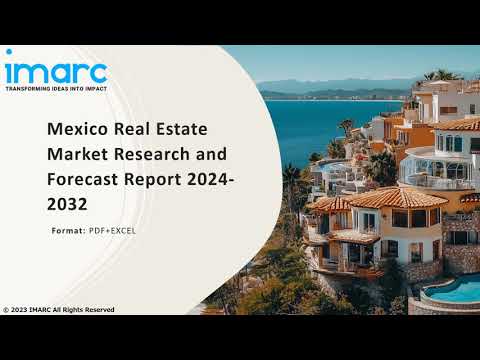
Unlocking the Future of Mexico City Real Estate: In-Depth Analysis of Residential and Commercial Dynamics
- Comprehensive Market Overview
- Emerging Technology Trends in Real Estate
- Competitive Landscape and Key Players
- Growth Projections and Investment Potential
- Regional Hotspots and Submarket Analysis
- Strategic Future Outlook
- Challenges and Opportunities Ahead
- Sources & References
“Mexico City’s real estate market in 2025 reflects a dynamic mix of robust demand and cautious optimism in both residential and commercial sectors.” (source)
Comprehensive Market Overview
The Mexico City real estate market is poised for dynamic shifts in 2025, driven by demographic changes, economic recovery, and evolving consumer preferences. Both residential and commercial sectors are expected to experience notable trends, shaped by local and global influences.
-
Residential Market Trends:
- Demand for housing in Mexico City remains robust, fueled by a growing middle class and continued urbanization. According to Statista, housing demand in Mexico is projected to increase by 3.2% in 2025, with Mexico City accounting for a significant share.
- Vertical living is on the rise, with new apartment developments targeting young professionals and families seeking proximity to employment hubs and amenities. The trend toward mixed-use developments is also accelerating, integrating residential, retail, and leisure spaces.
- Affordability remains a challenge, as average home prices in Mexico City rose by 8.5% year-over-year in Q1 2024 (Inmuebles24). This is prompting increased interest in suburban and peripheral neighborhoods, where prices are more accessible.
-
Commercial Market Trends:
- The commercial real estate sector is rebounding, with office vacancy rates declining to 18.7% in early 2024, down from a pandemic peak of over 23% (CBRE).
- Flexible workspaces and co-working environments are gaining traction, as companies adopt hybrid work models. Demand for high-quality, sustainable office spaces is increasing, with LEED-certified buildings commanding premium rents.
- Retail real estate is adapting to changing consumer habits, with e-commerce growth driving demand for last-mile logistics and warehousing. The industrial sector, particularly logistics parks near major transport corridors, is expected to see continued investment and expansion (JLL).
Looking ahead, the 2025 outlook for Mexico City’s real estate market is optimistic but nuanced. While economic headwinds and affordability concerns persist, the city’s status as a business and cultural hub continues to attract both domestic and international investors. Strategic development, infrastructure improvements, and policy support will be key to sustaining growth across both residential and commercial segments.
Emerging Technology Trends in Real Estate
The Mexico City real estate market is poised for significant transformation in 2025, driven by emerging technologies and shifting economic dynamics. Both residential and commercial sectors are experiencing rapid digitalization, sustainability initiatives, and evolving consumer preferences, shaping the outlook for the coming year.
- Proptech Adoption: The integration of property technology (proptech) is accelerating, with platforms leveraging artificial intelligence (AI), big data, and virtual reality (VR) to streamline property searches, transactions, and management. According to Statista, Mexico’s proptech sector is expected to grow by over 15% in 2025, as digital platforms become the norm for both buyers and sellers.
- Smart and Sustainable Buildings: Demand for energy-efficient and smart homes is rising, particularly among younger buyers. Developers are increasingly incorporating IoT devices, green materials, and renewable energy solutions. The JLL Mexico City Real Estate Market Overview notes that over 30% of new residential projects in 2025 will feature smart home technology and sustainability certifications.
- Remote Work and Flexible Spaces: The commercial sector is adapting to hybrid work models, with a surge in demand for flexible office spaces and coworking hubs. CBRE reports that flexible workspace inventory in Mexico City is projected to increase by 20% in 2025, as companies seek adaptable leasing options.
- Residential Market Resilience: Despite global economic uncertainties, Mexico City’s residential market remains robust. Urban migration and a growing middle class are fueling demand for mid-range and affordable housing. According to Inmuebles24, average residential property prices are forecasted to rise by 6-8% in 2025.
- Foreign Investment and Nearshoring: Mexico City continues to attract foreign investors, particularly in logistics and industrial real estate, due to nearshoring trends and supply chain diversification. Knight Frank highlights that commercial real estate investment volumes are expected to grow by 10% in 2025.
In summary, the 2025 outlook for Mexico City’s real estate market is defined by technological innovation, sustainability, and adaptability, positioning the city as a dynamic hub for both residential and commercial growth.
Competitive Landscape and Key Players
The competitive landscape of the Mexico City real estate market in 2025 is shaped by robust demand, evolving consumer preferences, and the strategic positioning of both domestic and international players. As the largest urban center in Latin America, Mexico City continues to attract significant investment in both residential and commercial segments, driven by population growth, urbanization, and a recovering post-pandemic economy.
- Residential Market: The residential sector is experiencing a surge in demand for mid-range and affordable housing, particularly in peripheral neighborhoods such as Iztapalapa, Tlalpan, and Azcapotzalco. Developers like Vinte and CADU are expanding their portfolios to cater to first-time buyers and young professionals. According to Inmuebles24, average home prices in Mexico City rose by 7% year-over-year in 2024, with continued moderate growth expected in 2025.
- Commercial Market: The commercial real estate sector is rebounding, with a focus on mixed-use developments and flexible office spaces. Key players such as FIBRA Prologis and FIBRA Danhos are leading investments in logistics parks and retail centers, capitalizing on the nearshoring trend and e-commerce growth. The office vacancy rate, which peaked at 23% in 2022, is projected to decline to 18% by the end of 2025 as hybrid work models stabilize (CBRE).
- Foreign Investment: International investors, particularly from the U.S. and Spain, are increasing their presence, attracted by favorable exchange rates and Mexico City’s strategic location. According to JLL, foreign direct investment in real estate is expected to grow by 10% in 2025, with a focus on high-end residential towers and logistics assets.
- Emerging Trends: Sustainability and smart building technologies are becoming key differentiators. Developers are integrating green certifications and energy-efficient designs to meet regulatory requirements and appeal to environmentally conscious buyers (Green Buildings Mexico).
Overall, the Mexico City real estate market in 2025 is characterized by dynamic competition, innovation, and a strong outlook for both residential and commercial segments, with established and emerging players vying for market share in a rapidly evolving environment.
Growth Projections and Investment Potential
The Mexico City real estate market is poised for robust growth in 2025, driven by demographic expansion, foreign investment, and evolving urban dynamics. Both residential and commercial sectors are expected to benefit from these trends, with analysts projecting continued demand and rising property values.
Residential Market Trends and Forecasts
- Population Growth: Mexico City’s population is projected to surpass 22 million by 2025, fueling sustained demand for housing (Statista).
- Housing Demand: The city faces a housing deficit of over 250,000 units, particularly in affordable and mid-range segments, prompting developers to focus on vertical developments and mixed-use projects (El Universal).
- Price Appreciation: Residential property prices in Mexico City rose by 8.2% year-over-year in 2023, and are forecast to increase by 6-8% in 2025, outpacing inflation (Inmuebles24).
- Rental Market: The influx of remote workers and digital nomads is boosting demand for rentals, especially in neighborhoods like Roma, Condesa, and Polanco, with rental yields averaging 5-7% annually (Bloomberg Línea).
Commercial Market Trends and Forecasts
- Office Space Recovery: After pandemic-driven vacancies, the office market is rebounding, with absorption rates improving and prime office rents expected to grow by 4-6% in 2025 (CBRE).
- Industrial Boom: E-commerce growth and nearshoring are driving record demand for industrial and logistics space, with vacancy rates below 2% and rental rates up 12% year-over-year (JLL).
- Retail Resilience: Retail real estate is stabilizing, with new shopping centers and mixed-use developments targeting affluent consumers and international brands (Retail News México).
Investment Potential
Mexico City remains a top destination for both domestic and international investors, offering attractive returns and portfolio diversification. The combination of strong demographic trends, economic resilience, and government incentives for urban renewal projects positions the market for continued growth in 2025 and beyond (Forbes México).
Regional Hotspots and Submarket Analysis
The 2025 outlook for Mexico City’s real estate market is shaped by robust demand, evolving consumer preferences, and macroeconomic factors. Both residential and commercial sectors are expected to experience dynamic shifts, with certain submarkets emerging as clear hotspots.
-
Residential Market Trends:
- Mexico City’s residential sector is forecast to grow by 4.2% in 2025, driven by a young, urbanizing population and ongoing demand for vertical housing (Statista).
- Neighborhoods such as Polanco, Roma, and Condesa remain premium submarkets, with average prices exceeding MXN 80,000 per square meter. However, emerging areas like Santa María la Ribera and Escandón are attracting younger buyers due to relative affordability and improved amenities (Inmuebles24).
- Rental demand is surging, with vacancy rates in central districts dropping below 5% as remote work and lifestyle changes persist post-pandemic (Lamudi).
-
Commercial Market Trends:
- The office market is stabilizing after pandemic-driven contractions. Prime office space in corridors like Reforma and Santa Fe is seeing renewed interest, with vacancy rates expected to fall to 17% by late 2025 (CBRE).
- Retail real estate is buoyed by the expansion of mixed-use developments and a rebound in consumer spending. Submarkets such as Insurgentes and Perisur are leading in new retail supply and foot traffic (JLL).
- Industrial and logistics properties, especially in the northern and eastern peripheries, are experiencing record-low vacancy rates (below 3%) due to nearshoring trends and e-commerce growth (Colliers).
In summary, Mexico City’s 2025 real estate market is poised for moderate growth, with residential and industrial submarkets outperforming. Investors and developers are advised to monitor emerging neighborhoods and logistics corridors for the best opportunities.
Strategic Future Outlook
The outlook for Mexico City’s real estate market in 2025 is shaped by a dynamic interplay of economic recovery, demographic shifts, and evolving consumer preferences. Both residential and commercial sectors are expected to experience notable trends, underpinned by macroeconomic stability and ongoing urban development initiatives.
Residential Market Trends
- Continued Demand for Mid-Range Housing: The demand for mid-range and affordable housing is projected to remain robust, driven by Mexico City’s growing middle class and a steady influx of young professionals. According to JLL, residential sales volumes in 2024 increased by 8% year-over-year, a trend expected to persist into 2025.
- Vertical Living and Mixed-Use Developments: Urban densification is fueling the rise of vertical housing and mixed-use projects, particularly in central neighborhoods such as Roma, Condesa, and Polanco. These developments cater to lifestyle preferences for walkability and integrated amenities (Knight Frank).
- Rental Market Resilience: The rental sector remains resilient, with average rents rising by 6% in 2024, according to Inmuebles24. This trend is expected to continue as remote work and flexible living arrangements gain traction.
Commercial Market Trends
- Office Space Recovery: After a pandemic-induced downturn, the office market is showing signs of stabilization. Vacancy rates, which peaked at 23% in 2022, are forecast to decline to 18% by the end of 2025 as companies adopt hybrid work models and seek modern, sustainable spaces (CBRE).
- Retail Sector Transformation: Retail is undergoing transformation, with experiential and convenience-driven formats gaining ground. E-commerce growth is prompting retailers to invest in omnichannel strategies and last-mile logistics hubs (Statista).
- Industrial and Logistics Expansion: The nearshoring trend is boosting demand for industrial and logistics real estate, particularly in the northern and eastern corridors of the city. Industrial vacancy rates are projected to remain below 4% through 2025 (Colliers).
Overall, Mexico City’s real estate market in 2025 is poised for moderate growth, with resilience in residential demand and renewed momentum in commercial segments, supported by favorable demographic and economic fundamentals.
Challenges and Opportunities Ahead
The 2025 outlook for Mexico City’s real estate market is shaped by a complex interplay of challenges and opportunities across both residential and commercial sectors. As Latin America’s second-largest urban economy, Mexico City continues to attract domestic and international investors, but faces headwinds from economic, regulatory, and social factors.
- Residential Market: Demand for housing remains robust, driven by a growing middle class and ongoing urbanization. However, affordability is a persistent challenge. According to Inmuebles24, average home prices in Mexico City rose by 7.5% year-over-year in 2023, outpacing wage growth. This trend is expected to continue into 2025, potentially widening the housing gap. On the opportunity side, government initiatives to boost affordable housing and the rise of build-to-rent models are attracting new investment and innovation.
- Commercial Market: The commercial sector is undergoing transformation. Office space demand remains subdued due to hybrid work trends, with vacancy rates hovering around 23% in late 2023 (CBRE). However, the logistics and industrial segments are booming, fueled by nearshoring and e-commerce growth. Industrial vacancy rates dropped below 2% in some submarkets, and rental prices increased by 15% year-over-year (JLL).
- Regulatory and Infrastructure Factors: Uncertainty around zoning laws, permitting, and infrastructure investment remains a challenge. The city’s new urban development plan, expected in 2025, could reshape land use and investment priorities (El Financiero).
- Foreign Investment and Sustainability: Mexico City’s real estate continues to attract foreign capital, especially in luxury residential and industrial assets. There is also growing demand for sustainable and energy-efficient buildings, presenting opportunities for developers who can meet ESG criteria (Green Building Mexico).
In summary, while affordability, regulatory uncertainty, and office market softness pose challenges, Mexico City’s real estate market in 2025 is poised for growth in affordable housing, industrial, and sustainable development segments, offering significant opportunities for agile investors and developers.
Sources & References
- 2025 Mexico City Real Estate Market Outlook: Residential & Commercial Trends and Forecasts
- Statista
- JLL
- Knight Frank
- Vinte
- FIBRA Prologis
- FIBRA Danhos
- El Universal
- Bloomberg Línea
- Forbes México
- El Financiero
This post Mexico City Property Market Insights: Residential and Commercial Trends & Projections appeared first on Macho Levante.

A cybersecurity specialist with a passion for blockchain technology, Irene L. Rodriguez focuses on the intersection of privacy, security, and decentralized networks. Her writing empowers readers to navigate the crypto world safely, covering everything from wallet security to protocol vulnerabilities. Irene also consults for several blockchain security firms.









